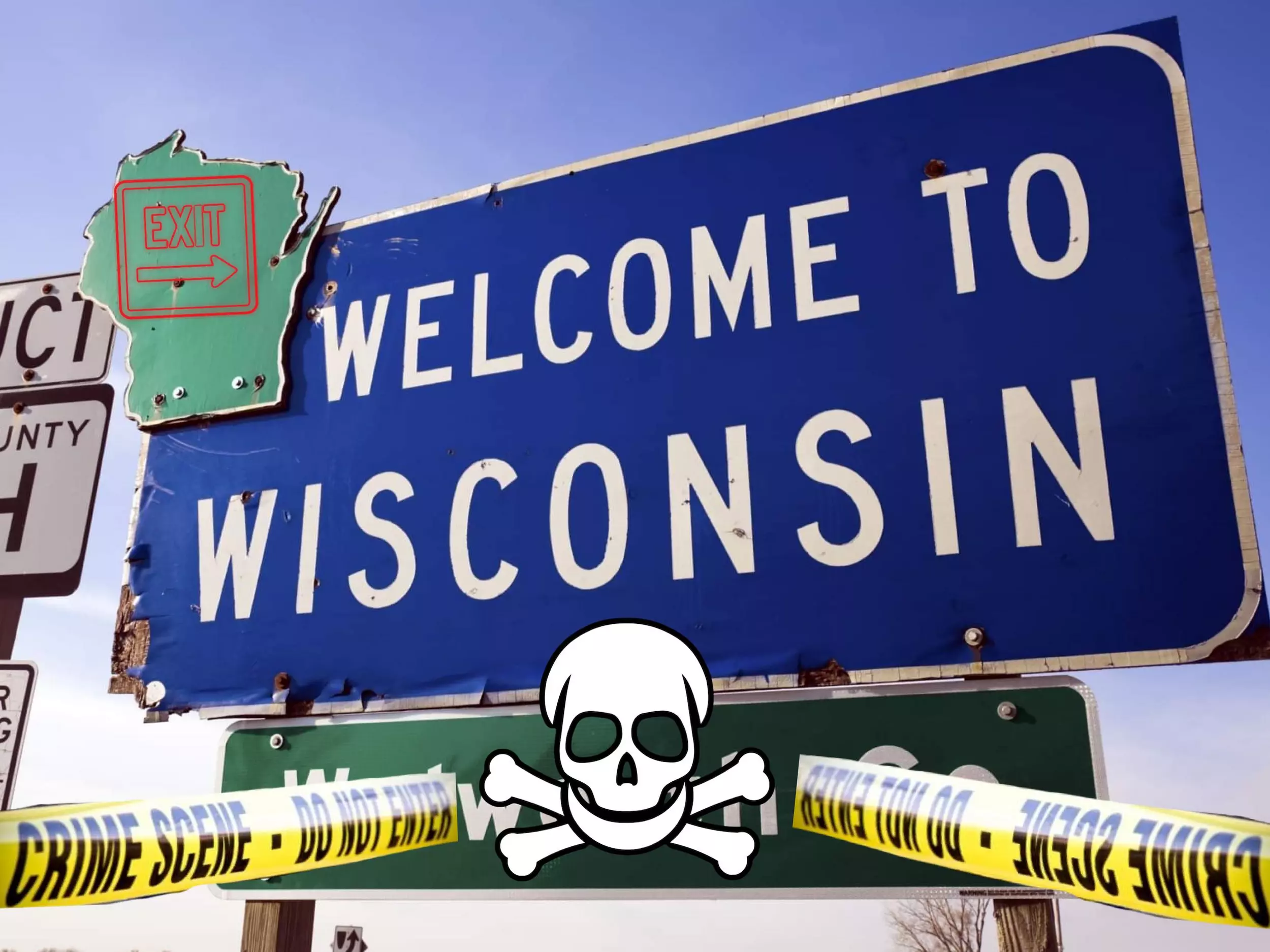Wisconsin, known for its idyllic landscapes, cheese, and friendly people, provides a lovely backdrop for many communities. However, not all of its locales are created equal. Some cities and towns struggle with economic issues, high crime rates, or lackluster amenities, potentially making them less desirable places to live. Let’s delve into the five towns topping the charts as the worst places to live in Wisconsin.
1. Beloit
- Sources:
- FBI Uniform Crime Reporting (https://ucr.fbi.gov/)
- US Census Bureau (https://www.census.gov/)
- Wisconsin Department of Public Instruction (https://dpi.wi.gov/)
- Analysis: Beloit, situated on the border with Illinois, consistently appears on lists of Wisconsin’s worst places to live. The city faces several significant challenges:
- High Crime: Beloit’s violent and property crime rates exceed national and state averages. This contributes to a sense of insecurity among residents.
- Economic Woes: The decline of manufacturing industries has hit Beloit hard, leading to job losses and high unemployment. Low median household incomes reflect this economic hardship.
- Educational Struggles: Beloit’s schools grapple with underfunding and lower student performance compared to statewide levels, hindering future opportunities for its youth.
2. Milwaukee
- Sources:
- FBI Uniform Crime Reporting (https://ucr.fbi.gov/)
- US Census Bureau (https://www.census.gov/)
- Governing: The States and Localities (https://www.governing.com/)
- Analysis: While Milwaukee offers urban amenities and cultural attractions, the largest city in Wisconsin has its share of problems hindering its overall livability:
- Crime: Certain areas of Milwaukee see elevated crime rates, especially violent crimes. This creates a sense of unease and limits opportunities in some neighborhoods.
- Inequality: Stark income disparities exist in Milwaukee, with some neighborhoods experiencing concentrated poverty and limited economic mobility.
- Urban Issues: Milwaukee contends with issues common to large cities, like aging infrastructure in some areas and urban blight stemming from economic hardship.
3. Waupaca
- Sources:
- US Census Bureau (https://www.census.gov/)
- Niche (https://www.niche.com/)
- City of Waupaca (https://www.cityofwaupaca.org/)
- Analysis: Waupaca, a small city within the Chain O’Lakes region, might seem picturesque, but factors impacting livability include:
- Economic Limitations: Waupaca’s economy relies heavily on seasonal tourism. This creates employment instability and limited opportunities outside of the peak tourist season.
- Aging Population: Waupaca contends with an older demographic, which can strain local services and contribute to a less vibrant community dynamic.
- Lack of Amenities: Given its smaller size, Waupaca may offer fewer amenities, dining options, and entertainment choices compared to larger cities, a potential drawback for those seeking a more active lifestyle.
4. Antigo
- Sources:
- US Census Bureau (https://www.census.gov/)
- US Bureau of Labor Statistics (https://www.bls.gov/)
- City of Antigo (https://www.antigo-city.org/)
- Analysis: Antigo, a town in northern Wisconsin, faces challenges making it a less-than-ideal place to establish roots:
- High Unemployment: Antigo struggles with higher unemployment rates compared to state and national averages. This economic stagnation impedes growth and can limit opportunities for residents.
- Infrastructure Issues: Outdated infrastructure in parts of Antigo adds to an overall sense of decline and may require increased financial investment from residents.
- Limited Amenities: Similar to other smaller Wisconsin towns, Antigo may lack diverse retail, dining, and entertainment options, especially compared to larger metropolitan areas.
5. Wisconsin Rapids
- Sources:
- US Census Bureau (https://www.census.gov/)
- Wisconsin Rapids City Data ([invalid URL removed])
- Wisconsin Department of Workforce Development (https://dwd.wisconsin.gov/)
- Analysis: Wisconsin Rapids, once a thriving center for the paper industry, faces a new set of difficulties:
- Paper Industry Dependence: As the paper industry declines, Wisconsin Rapids experiences significant economic fallout. This leads to a shrinking population and loss of jobs.
- Population Decline: As opportunities diminish, Wisconsin Rapids faces a declining population, mostly younger residents seeking opportunities elsewhere. This can create a negative cycle for a community.
- Economic Stagnation: Wisconsin Rapids struggles to diversify its economy and attract new industries. This compounds the job loss issues and creates uncertainty for long-term residents.
Important Considerations
- Subjectivity: These ‘worst places’ lists are inherently subjective. Every individual prioritizes differently when selecting a place to reside. Factors such as affordability, proximity to family, or access to specific amenities can greatly outweigh negatives on such lists.
- Data Interpretation: Statistics on crime, employment, and education provide a starting point, but require nuanced interpretation. It’s crucial to investigate the underlying causes affecting the data and determine if these reflect temporary or systemic issues within a community.
- Potential for Revitalization: Towns facing challenges have the potential to overcome them. Active community leadership, focused economic development strategies, and engaged residents can lead to positive change and improve livability over time.
Conclusion
While Wisconsin offers many wonderful places to live, some towns face significant challenges that impact their quality of life. Understanding factors like crime rates, economic outlook, and access to amenities is essential for individuals considering a move to any area within the state. It’s important to remember that these lists provide a starting point; personal research, and even visiting the location are crucial before making any major relocation decisions.



